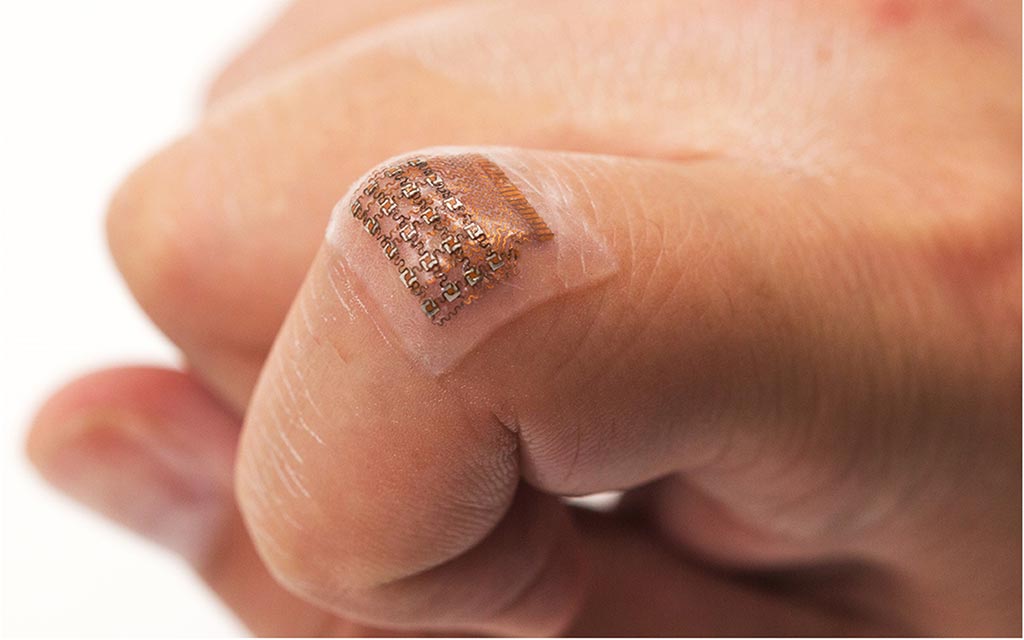Conformal Ultrasonic Patch Monitors Central Blood Pressure
By MedImaging International staff writers
Posted on 24 Sep 2018
A new study describes how a wearable ultrasound patch that non-invasively monitors central blood pressure (BP) could detect cardiovascular problems earlier on.Posted on 24 Sep 2018
Developed at the University of California, San Diego (UCSD, USA), the ultrasonic device is made of a thin sheet of silicone elastomer embedded with an array of small piezoelectric transducers connected by thin, spring-like copper bridging wires. The result is an ultrathin (240 μm) and stretchable patch that conforms to the skin, enabling non-invasive, continuous capture of BP waveforms by sending ultrasound waves that record the diameter of arterial and venous sites blood vessels located as deep as four centimeters below the skin, even through fatty tissues.

Image: A wearable ultrasound patch tracks blood pressure (Photo courtesy of Chonghe Wang/UCSD).
The changing diameter of the deeply embedded vessel, which is modified by the pulsations of the blood plowing through it, is recorded by the piezoelectric transducers and translated into a visible waveform using customized software. Each peak, valley and notch in the waveform, as well as the overall shape, represents a specific activity or event in the heart, providing detailed information to doctors assessing a patient's cardiovascular health. The study was published on September 11, 2018, in Nature Biomedical Engineering.
“Wearable devices have so far been limited to sensing signals either on the surface of the skin or right beneath it; but that is like seeing just the tip of the iceberg. We are adding a third dimension to the sensing range of wearable electronics,” said senior author professor of nanoengineering Sheng Xu, PhD, of the UCSD Jacobs School of Engineering. “By integrating ultrasound technology into wearables, we can start to capture a whole lot of other signals, biological events, and activities going on way below the surface in a non-invasive manner.”
“Non-invasive approaches, including photoplethysmography and tonometry, only enable access to the superficial peripheral vasculature. Although current ultrasonic technologies allow non-invasive deep tissue observation, unstable coupling with the tissue surface resulting from the bulkiness and rigidity of conventional ultrasound probes introduces usability constraints,” concluded lead author graduate student Chonghe Wang, MSc, and colleagues. “Continuous monitoring of the central blood pressure waveform from deeply embedded vessels such as the carotid artery and jugular vein has clinical value for the prediction of all-cause cardiovascular mortality.”
Related Links:
University of California, San Diego














